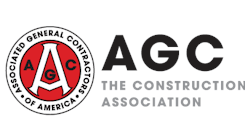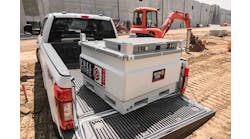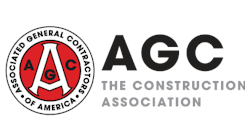Supply Chain is Improving, with Exceptions, AGC Firms Say
Contractors have reported far fewer supply-chain problems recently than in 2020-2022, according to informal soundings in mid-July by AGC chapters. The most frequently reported issue was electrical equipment such as switchgear, transformers, meter bases, lighting, and traffic signaling.
One contractor reported, “Switchgear is getting worse instead of better it seems. [Two manufacturers] are really struggling to meet commitments and missing some dates they were estimating.”
Several also reported delays on HVAC equipment, chillers, and air handlers. There were scattered reports about delays for doors or door hardware, roofing materials, and parts for trucks or equipment. However, few reported delays in obtaining cement or ready-mix concrete, in contrast to much of 2022, when such reports were widespread. But low water levels in the Mississippi River system may cause delays in barge traffic, including cement. The Wall Street Journal reported that low water levels in the Panama Canal have led to a backup of more than 200 ships.
“Most are bulk cargo or gas carriers that are typically booked on short notice,” added another contractor, but some construction materials and equipment deliveries may be delayed. Readers are invited to send reports about materials prices and availability to [email protected].
“Data released for the week ending August 19 provided further evidence of a strong construction industry as fewer projects reported faltering in their transition from concept to physical completion,” ConstructConnect posted on Monday in its weekly Project Stress Index. All three measures of project stress declined in the latest weekly results. Week-on-week delayed bid-date project levels fell to their lowest level since at least 2020.The level of on-hold projects in the third quarter remains generally unchanged. Abandoned project levels fell for a second consecutive week and are approaching 2020 lows.”
The value of construction starts in current dollars (not adjusted for inflation) declined 8.1% from July 2022 to last month, data firm ConstructConnect reported on August 18. Residential starts plunged 25%, with single-family down 15% and apartments down 40%. Nonresidential building starts skidded 10%, with the largest component—institutional starts—down 10%, industrial (manufacturing) starts down 2.0%, and commercial starts down 17%. Engineering (civil) starts jumped 25%, with increases for most segments: roads/highways, up 20%; power and miscellaneous civil, up 104%; water/sewage, up 4.6%; bridges, up 11%; dams/marine, up 7.3%; and airports, down 19%.
The Architecture Billings Index (ABI) registered a score of 50.0, seasonally adjusted in July, down minimally from 50.1 in June, the American Institute of Architects (AIA) reported last week. The ABI is derived from the share of responding architecture firms that report a gain in billings over the previous month less the share reporting a decline in billings, presented on a 0-to-100 scale. Thus, any score above 50 means more firms reported increased billings than decreased billings compared to the month before. AIA calls the index “a leading economic indicator that leads nonresidential construction activity by approximately 9-12 months.” Readings for practice specialties (based on three-month averages) varied: commercial/industrial, 52.7 (up from 50.2 in June); institutional, 51.2 (down from 53.1); mixed practice, 46.3 (down from 48.4); and residential (mainly multifamily), 45.4 (down from 46.1). The new design contracts index slipped to 50.0 from 52.7 in June.
“Retailers are on track to open 1,000 net new stores in the U.S. this year as retail availability hits record lows, in fresh signs of the sector’s resilience despite turmoil in commercial real estate,” the Journal reported on Wednesday. “Landlords say demand for retail space has remained robust this year, defying inflation pressures, high interest rates and liquidations including Bed Bath & Beyond and Christmas Tree Shops. Retail’s strength is largely the result of a sharp drop in retail construction since the 2008-09 financial crisis, which allowed the oversupplied sector to digest its existing real estate. Nationwide, dollar stores are signing the most leases again this year, according to Coresight. Dollar General alone plans to open about 1,000 stores this year. Other retailers are also adding locations, ranging from 12 new stores at pool-supplies company Leslie’s to plans for more than 200 openings this year at discount chain Five Below.”
AGC posted an updated version of the Construction Impact Model created for it by Brian Lewandowski of the University of Colorado, Boulder. Users can use the model to see the additions to each state’s jobs and output from investments in several categories of structures.







